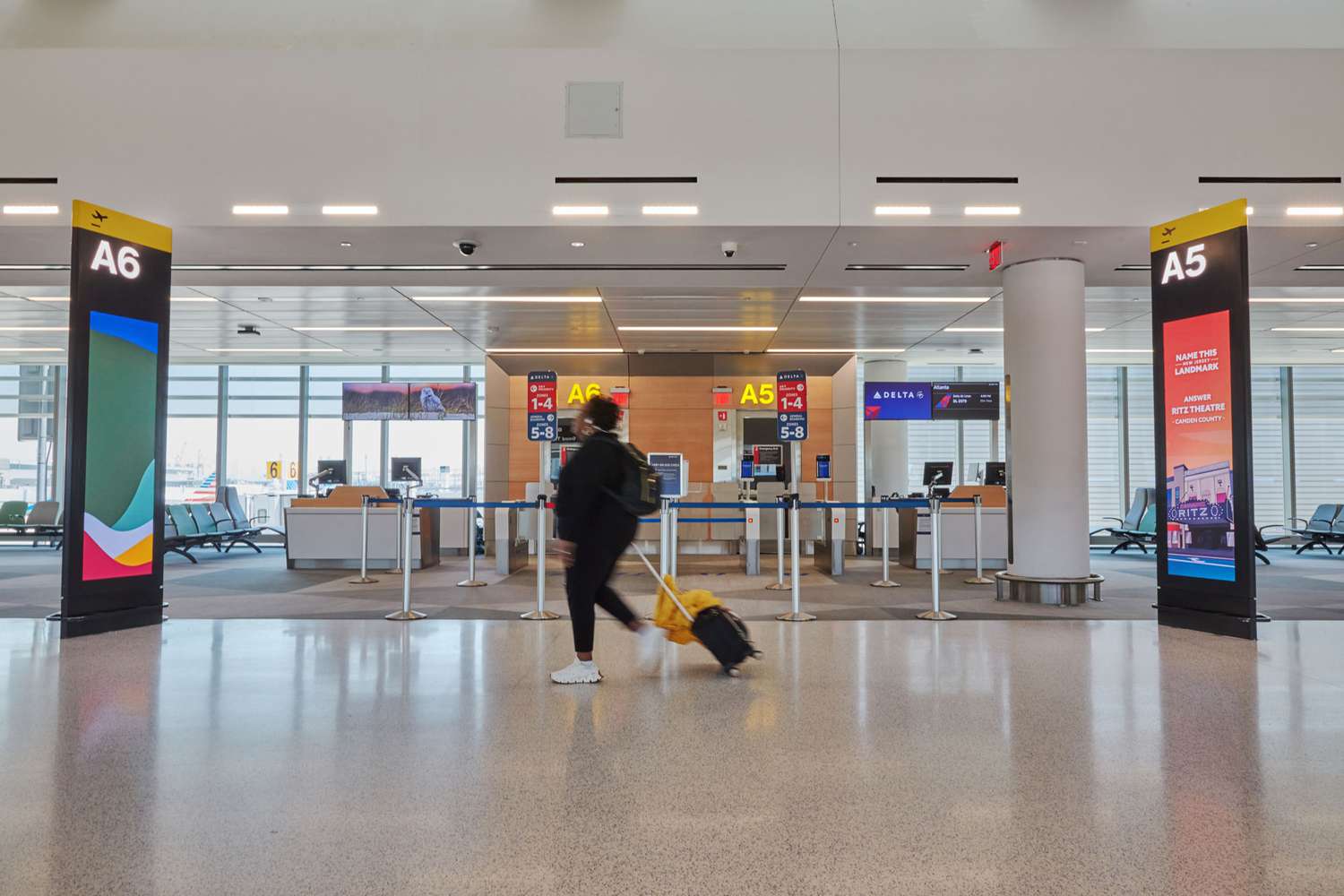- You may be able to leave the airport during a layover, depending on the destination’s immigration laws and the length of your layover.
- For a long overnight layover, consider booking an airport hotel to get some sleep between flights.
- Some airlines offer stopover programs for travelers who want to spend a little more time in their layover destination.
Long layovers are often part of travel. Sometimes they’re the price you pay for a lower-cost ticket, and sometimes they’re just an inevitability of flying long distances. Flights going from Europe to Australia, for example, often involve stopovers in the Middle East of 10-15 hours or more. A flight from Rome to my hometown of Fort Myers, Florida, always involves a connecting flight—and at least one itinerary would put me in the Atlanta airport for more than eight hours. And that’s a whole lot of time to browse the racks at Hudson News.
If your schedule—and local immigration laws—permit it, leaving the airport during a long layover can be a great way to pop into a city. It at least gives you time to say you’ve been there, whether to take a quick tour, snap a selfie, or have lunch and head back to the airport. “I’ve intentionally booked long layovers to explore a new destination,” says Katie Dundas, a travel writer based in Australia. “I frequently fly long haul, and long layovers can break the travel times by creating a ‘vacation within a vacation.’”
But before you head for the nearest exit, let’s look at the many factors to consider before leaving the airport during a layover.
DuKai photographer/Getty Images
Are you allowed to leave the airport during a layover?
The short answer is it depends on the destination. Some countries require travel visas from foreigners entering, so unless you have a visa, you wouldn’t be allowed to exit the secure area of the airport, even for a few hours. In other places, you’re allowed to exit, but you’ll have to go through passport control on the way out or on the way back in. Here are just a few scenarios.
Layovers in the United States
If your originating airport and layover airport are both within the U.S., you can exit the airport during your layover. You will have to pass through security when you return for your connecting flight.
If your flight originated outside the United States and arrives in a U.S. airport, where you’ll change planes for your next flight, you can also exit the airport during your layover. But before you exit, you’ll have to collect your checked bags, go through U.S. Customs and Immigration, and then recheck your bags. Depending on the airport and how many flights arrive around the same time, this could take an hour or more, which will eat into your sightseeing time. When you return to the airport for your onward domestic flight, you’ll go through standard security checks, but not immigration or passport control.
Non-U.S. passport holders are allowed to exit a U.S. layover airport as long as they have visa-free entry (for example, the ESTA visa waiver) or a valid visa to enter the U.S. But there’s a caveat: Amid recent immigration crackdowns by the Trump administration, international travelers entering the U.S. may face tighter scrutiny at passport control.
Layovers in the European Union
U.S. passport holders traveling to the European Union’s Schengen countries are free to exit the airport during a layover, time permitting. If your originating flight was from a Schengen country, you will probably not have to go through passport control to leave the airport, but you will have to rescan your passport when you come back in. (Eventually, the EU will implement the ETIAS visa waiver program, but for now, it’s a visa-free zone for U.S. travelers.)
Elsewhere in the World
In order to enter as a tourist, some countries require that you obtain a travel visa in advance of arrival, while others will allow you to obtain a visa upon arrival at the airport. Others, like the United Kingdom, require a visa even if you are just transiting through and not leaving the airport security area. So don’t book that hop-on/hop-off bus tour in any layover destination before you check the U.S. State Department’s guide to international travel requirements for U.S. citizens.
Factors to Consider Before Leaving the Airport During a Layover
Once you know if you can leave the airport during a layover, it’s time to decide whether you should. Though much of it boils down to your tolerance for risk, here are some points to consider.
Layover Length
Be realistic about how much time you really have, how long it will take you to get out of the airport and to the place you want to visit, and how long it will take you to get back to the airport and through security. “I’d definitely only do it if I had loads of time,” says writer and on-air travel personality Heather Greenwood Davis. “As it is, connections can be tight and tough to maneuver so I’d want at least 5-7 hours. But others might be more willing to take the risk.”
If you’re on a domestic layover, you can walk right out of the airport and make your way into the city. (Boston’s Logan International Airport, for example, is relatively close to the city center and well-connected by public transportation.) But what about getting back to the airport? What if it’s rush hour and trains are backed up or you can’t find a cab? And once there, how long will it take you to get through security and on to your gate? “Be flexible,” cautions Dundas, “and always leave more time than you need to return to the airport!”
On an international layover, you have to go through passport control before you can leave the airport. While some airports are more efficient than others, the wait to go through immigration can be at least an hour (or longer if several international flights arrive at the same time).
With all this in mind, look at your layover time and start subtracting. A six-hour layover in Zurich, Switzerland, for example, where the airport is close to and very well connected to the city center, may allow you 3-4 hours of sightseeing, depending on how quickly you can deplane and get through passport control. Larger, busier airports like Paris’s Charles De Gaulle, are located farther from their city centers, have multiple terminals connected by airport trains, and often very long security lines. A six-hour layover here simply wouldn’t allow enough time to leave the terminal between flights.
Remember that when you return to the airport, you have to go through security again. Standard recommendations are to allow two hours for domestic flights and three hours for international flights.
Carry-on Luggage
If you have a carry-on bag, chances are you don’t want to lug it around for a day of sightseeing. A clacking roller bag is a nuisance to yourself and others, and many museums and attractions won’t allow you to enter with a backpack or anything larger than a handbag. So you either have to locate a luggage storage facility at the airport or find one right as you get into the city.
Time of Day
A daytime layover of several hours or more might provide a good opportunity to do a little touring. An evening or overnight layover won’t offer the same chance to see much, since museums and many attractions will be closed. But if you’re content to have a late-night meal and do some bar-hopping before heading back to the airport, then it might be an option, especially in famously late-night cities like Las Vegas or Tokyo.
Another option for an overnight layover is a transit hotel. Located within the secure area of the airport, these hotels offer basic guest rooms that allow you to get some shuteye without having to go through passport control. Many airport lounges also rent dayrooms, where you can shower, relax, and doze during a long layover.
Alexander Spatari/Getty Images
Tips for Planning Layover Excursions and Activities
Advance planning is what will make or break your layover sightseeing foray, as Dundas recalls on a trip from Sydney to Honolulu with a nine-hour layover in Auckland. “This was cheaper than flying direct and it also gave me time to do some sightseeing in Auckland. It was easy to leave the airport and catch a bus into the city, and I was able to stroll the Auckland Botanic Gardens and sightsee around the city before catching the bus back to the airport. I didn’t find the process stressful; I just left plenty of time to return to the airport.”
Look up distances and transport options.
Pull up a map and calculate how far the airport is from the area you want to visit, and how you can get there the fastest. And don’t always assume Uber or a taxi will be the quickest option. From Heathrow, for example, the Elizabeth Line train will get you to Bond Street Station in 34 minutes, where you’ll be within walking distance of SoHo, Oxford Street, The British Museum, and more. The same journey would take an hour or more by car.
Study opening times.
Before you plan your layover excursion around a specific destination, make sure it will actually be open on the date and time of your visit. That restaurant in Rome you have your heart set on may close in the hours between lunch and dinner, for example. In New York City, the Metropolitan Museum of Art is closed on Wednesdays—many other museums are closed on Mondays or Tuesdays.
Stopover Programs
Some airlines and airports, especially those in destinations where long layovers are common, offer stopover programs that allow you to sightsee without having to set out on your own. “I took advantage of the trips offered by Changi International Airport in Singapore and loved it,” says Greenwood-Davis. “You handed over your passport and then could choose from a few different tours that would get you back in time for your flight. I remember that we had loads of time, and I didn’t feel stressed because I was going through official channels.”
Airline stopover programs vary in their perks and flexibility. Among the most generous is Etihad Airways, which offers up to two free hotel nights to passengers passing through Abu Dhabi. Portugal’s TAP Airlines, Iceland Air, FinnAir, and a host of airlines serving the Middle East and Asia also allow passengers to book a stopover at no extra charge. For the risk-averse like Greenwood-Davis, it’s a great compromise. “As a rule follower, the idea that the people in charge of getting me to my destination are sanctioning it would offer me a lot of comfort.”

![The Best Ways To Fly to India With Points and Miles [Step-by-Step]](https://lowlevelflight.com/wp-content/uploads/2025/04/Taj-Mahal-India-150x150.jpg)
